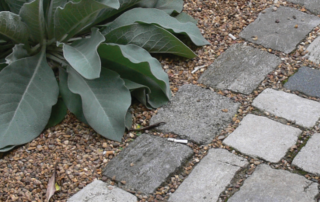Miért fontosak a vízáteresztő felületek a városi csapadékvíz-kezelésben?
A városokban a növekvő beépítettség és burkolt felületek aránya miatt a csapadékvíz természetes úton történő elszivárgása jelentősen csökkent. Az aszfalt, beton és egyéb vízzáró burkolatok megakadályozzák, hogy a csapadék a talajba szivárogjon, így az gyorsan lefolyik, terhelve a csatornarendszert, és gyakran áradásokat okozva. Ezért kiemelten fontos a vízáteresztő felületek alkalmazása, amelyek megoldást nyújtanak a városi csapadékvíz-kezelés kihívásaira.
Miért hasznosak a vízáteresztő felületek?
A vízáteresztő burkolatok, például a kavicsgyepes parkolók, zöldtetők vagy speciális porózus burkolatok, lehetővé teszik a csapadék természetes elszivárgását. Ezek a megoldások hozzájárulnak ahhoz, hogy a víz a talajba jusson, ahol újratölti a helyi vízkészleteket, miközben csökkentik a csatornahálózatra nehezedő terhelést. A lassabb vízlefolyás mérsékli az áradások kockázatát, miközben csökkenti a vízszennyezést is, mivel a szennyezőanyagoknak több idejük van a talajban vagy a növényzet által szűrődni.
Hogyan tarthatjuk meg a csapadékot?
A kavicsgyepes parkolók különösen hatékony megoldást kínálnak: a növényzettel borított kavicságyazat nemcsak vízáteresztő, hanem esztétikus és környezetbarát alternatívája a hagyományos betonparkolóknak. Hasonlóan működnek a porózus burkolatok is, amelyek apró réseken keresztül vezetik a vizet a talajba. A zöldtetők pedig a tetőkre hulló csapadék jelentős részét képesek megtartani, miközben hűsítik az épületeket és javítják a levegő minőségét.
A vízáteresztő felületek nemcsak a csapadékvíz-kezelést segítik, hanem számos egyéb előnnyel is járnak. Javítják a városi mikroklímát, csökkentik a hőszigethatást, és növelik a városok zöldfelületi arányát, ami élhetőbbé és egészségesebbé teszi a környezetet. Ezenkívül a talajvíz újratöltése révén hosszú távon segítik a helyi vízháztartás fenntartását.
A „Legyél Te is Esőmentő” kampány célja, hogy népszerűsítse ezeket a megoldásokat, és ösztönözze a lakosságot, hogy a saját környezetükben is alkalmazzanak fenntartható vízkezelési technikákat. Együtt tehetünk azért, hogy városaink ellenállóbbak legyenek az éghajlatváltozás hatásaival szemben, miközben megőrizzük természeti erőforrásainkat.








